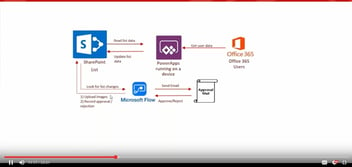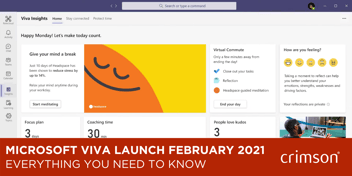Driving digital inclusion: Microsoft’s free accessibility training
People first, disability second
According to Scope, 19 percent of working-age adults are disabled. However, people with disabilities are almost twice as likely to be unemployed as non-disabled people. In most cases, organisations are not doing enough to support people with impairments despite the available information, support, and funding. This contributes to many disabled people living in poverty and slows down economic growth.
As well as a lack of confidence from employers around workplace adaptions, sadly, misconceptions also exist; for example, Scope states that 1 in 3 people see individuals with a disability as less productive than non-disabled people. However, most of us will likely face temporary, situational, or permanent disability. As we get older, our abilities change. For example, did you know keyboard shortcuts like (Ctrl+C) are universal and make life easier for people with mobility disabilities and vision difficulties?
Secure talented candidates
Persons with disabilities represent a vast segment of the market; however, candidates want to know how you will support their goals. In a candidate-driven market-leading organisations are planning to do more to ensure they don’t miss out on talented individuals with disabilities.
Crimson’s pledge
Earlier this year, Crimson signed a Partner Pledge agreement with Microsoft because we share Microsoft’s global vision to empower every person and every organisation on the planet to achieve more. The pledge comprises several different elements that promote Digital Skills, Diversity, Responsible and Ethical AI, and Sustainability.
Within their five-year commitment to help bridge the ‘Disability divide’ and provide societal inclusion for more than one billion people with disabilities worldwide. Microsoft wants to address inequalities around technology by encouraging others to follow in their footsteps and build accessible solutions and services that empower employees and customers with disabilities for a more inclusive future.
Assistive technology enables users and enhances their experience
Many people with a disability cannot access tools in the same way. However, some products can help. Assistive Technology (AT) increases accessibility for individuals, for example a piece of equipment or software that enables users. Microsoft itself offers AT across its devices and programmes. For instance, someone with low vision may use a Magnifier in Windows or voice commands to navigate a webpage or document.
Microsoft’s Accessibility Fundamentals training
To understand how to make technology and the workplace more accessible, Microsoft asked its partners to sign the UK Government’s Disability Confident scheme and commit to ensuring the employees at each partner company complete Microsoft’s Accessibility Fundamentals training.
Microsoft’s Accessibility Fundamentals training is a free course available to all; you do not need to be a Microsoft partner to complete it.
The course was created to help billions of people use the Accessibility tools across Microsoft’s different products and services. From the everyday programmes such as Microsoft Word, and Excel, to gaming devices.
The interactive course includes written explanations, video content and helpful quizzes designed to test your knowledge. On completion, you can also earn a badge displayed on your LinkedIn profile.
The training is split into four modules, and takes less than 3 hours to complete
- Introduction to disability and accessibility
- Microsoft Accessibility features and tools
- Creating accessible content with Microsoft 365
- Digital accessibility
Learn how to promote inclusivity through technology
You will learn about the different Accessibility tools available such as Focus Assist, which helps neurodiverse individuals. You’ll know more about ensuring your documents, emails, and webpages are accessible to people using screen readers and even the types of diagrams that will help people interpret data more effectively. Genius, AI, and Accessibility checkers can also be unlocked to discover how you can improve the accessibility of what you have produced. There is even information on gaming settings and app development.
Do it for yourself, colleagues, and future generations
The training is simple and effective, giving participants an excellent overview of the available tools. It is a fantastic place to start for any organisation wanting to raise awareness and learn more about accessibility.
Just because you can’t see a disability doesn’t mean it doesn’t exist
70 percent of disabilities are hidden. There may be people with partial disabilities, such as hearing challenges. Disabilities can be sudden or gradual, and sometimes people may have more than one impairment. Embracing new habits that promote inclusivity will position you as a stronger ally to many of your colleagues.
It's not just the right thing to do
A study of 140 U.S companies by Accenture and the American Association of People with Disabilities found that companies that offered the most inclusive working environment for disabled employees achieved an average of 28 percent higher revenue, 30 percent greater economic profit margins, and twice the net income of their industry colleagues between 2015 and 2018.
Let’s end the disability divide and help people access the tools they need to thrive.
Other resources
Importance of accessibility (linkedin.com)
Disability Confident – Are you disability confident? (campaign.gov.uk)
Reporting on disability and employment | Disability charity Scope UK
Crimson is an IT consultancy, an IT solutions provider, an IT recruitment agency, and a Microsoft Gold Partner operating across the UK. Crimson is part of the

